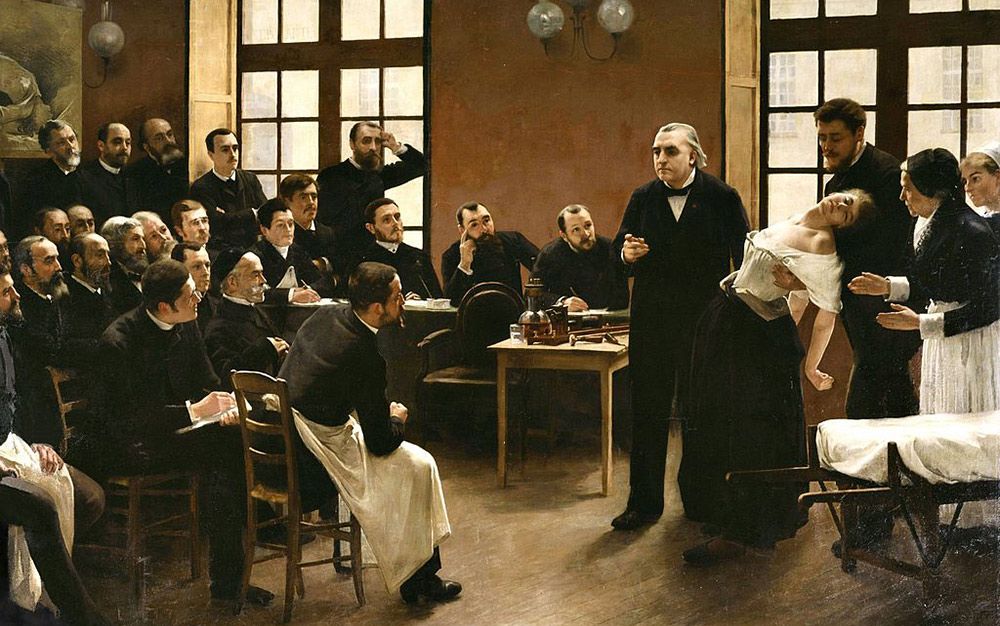Magnets and Balance Experiment:
- Who has heard of the concept that wearing magnets can improve health, balance, and strength?
- You will test this theory. Get into groups of two or three. Designate one person as the subject of the experiment. The other group members will observe and record the results.
- Hypothesis — Will a bracelet with magnets improve a person’s balance?
- Procedure
- Have the test subject stand with both feet on the ground.
- Have the subject pick up one leg and stand for as long as possible with it up and not holding onto anything for balance.
- When the subject picks up his or her leg, begin timing. Stop timing when the subject drops the leg or has to grab something for balance.
- While the subject has a leg lifted, observe details about how the person maintains balance such as arm position or wobbliness.
- After the person drops the leg, have the subject stand with two feet on the ground for 2 minutes.
- After standing for 2 minutes, attach the magnet bracelet. Have the person wearing the bracelet stand with both feet on the ground for 2 minutes.
- Repeat steps b – d.
- After everyone has finished, graph the results together with the other groups.
- What do you observe about the results?
- What are your conclusions?
Go to the Educator Notes to View the Rest of the Lesson Plan
This lesson plan is designed for high school or college students. It is Common Core-aligned for English Language Arts Literacy in Science and Technical Subjects for 9-12 grade.
This lesson plan can be completed in two 45-50 minute classes.
Notes for the Experiment:
The real point of this experiment is to learn about the placebo effect. Withhold this information until after the students have conducted the experiment.
You will need to make or buy bracelets. To make bracelets, use string or yarn to cover a small pebble or metal washer (this will serve as the fake magnet). Then attach to a cheap bracelet or one made of yarn.
When conducting the experiment, emphasize safety. Conduct the experiment away from desk or other objects that students might hit if they fall. Remind the students that it is not a competition and that they should put their legs down as soon as they feel off-balance to avoid falling.
Students should be able to stand on one leg for longer the second time. There are two factors that contribute to this. One is that it is easier to do a balancing task when you do it a second time. Two is that the subject might be impacted by the placebo effect. Because he or she thinks that the bracelet will improve balance, his or her balance will improve.
Remainder of the Lesson Plan (Pick up here after student discussion of the experiment results)
Experiment continued:
- After the students discuss their results, reveal that the hypothesis of the experiment was not actually to see if magnets improved balance but rather to see the impact of the suggestion that they do.
- Tell them that the bracelets did not actually contain magnets and ask them why they think balance did or did not improve (depending on what results your class observed).
- What arguments do you think people make about why magnets would improve balance? What is the impact of this belief on their mind and body?
This is the end of the first part of the lesson plan. Assign the students Erik Vance’s article, “Mesmerising,” from the resource section of the lesson plan.
Optional – Have students write a 250-300 word summary of the article to prepare for discussion in the next class.
Article Discussion:
- Did anything from the article remind you of the experiment conducted in class?
- How are theories about magnetism and the body related to hypnosis?
- Make a timeline of the events in the article as a class.
- Discuss the timeline and the article
- When was hypnosis accepted or in fashion? Why?
- When was hypnosis not accepted or in fashion? Why?
- How is hypnosis used in the modern American medical landscape?
- What challenges do practitioners who use hypnosis face?
- What makes a person more or less susceptible to hypnosis?
- What are current scientific ideas about the mechanism of hypnosis and how it impacts the brain?
- Do you think medical professionals should use hypnosis? Why or why not?
